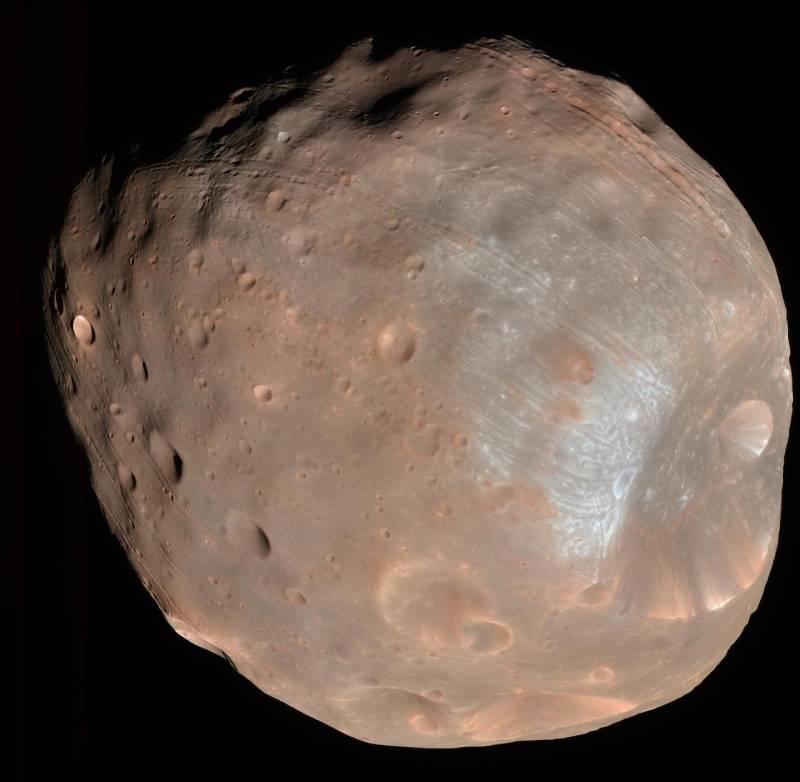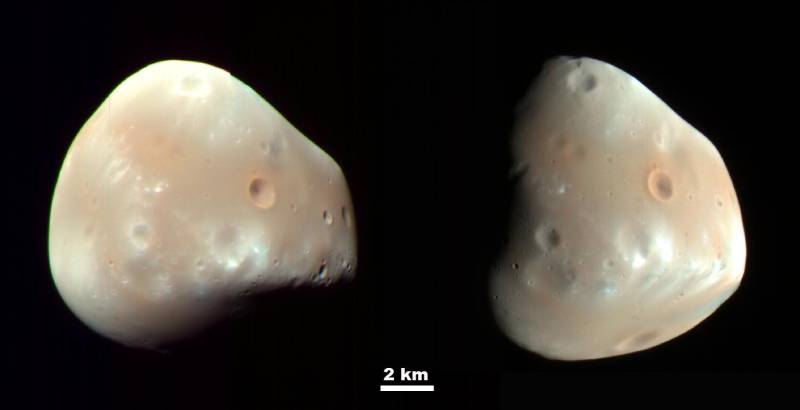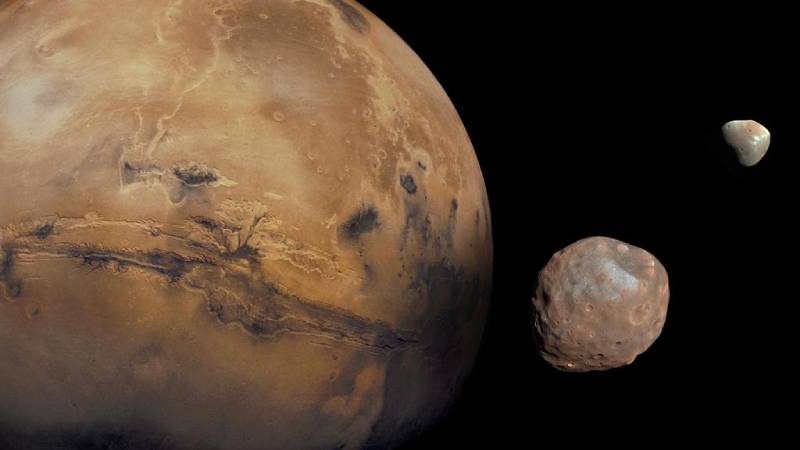Since the discovery of Mars in 1610, Mars has been a point of focus for scientific exploration. Yes, Mars harbors moons. The moons look like asteroids and are covered with craters made of iron and rock. But, unlike Earth, which has just one satellite, the Moons on Mars have no satellites due to their size and weak gravity, making it difficult to retain or capture natural satellites. The Martial moons are the darker and smallest objects in the solar system.
How Many Moons Does Mars Have?
Mars has two known moons – Phobos and Deimos. These moons were discovered in the 19th century in 1877 by Asaph Hall, an American Astronomer who used the U.S Naval Observatory’s 26-inch refracting telescope. Phobos means fear, and Deimos means dread, which describes the sons of a Roman God of War, derived from Greek Mythology, representing the twin sons of Ares (Mars). Most people believe that the moons once lived in the asteroid belt and were pulled to Mars by gravity, while others think that when Mars was first formed, it was surrounded by many objects. This is because of their strange composition and odd shapes. Most of the moons moved out to the asteroid belt, but the two moons remained. The moons consist of a type of rock called C-type, which resembles the composition of dark, carbonaceous chondrite asteroids.
Phobos

Phobos, the larger moon, is shaped irregularly and measures about 27 kilometers (17 miles) in length (27 X 22 X 18 kilometers approximately). Phobos orbits Mars at a very close distance of 3700 miles (6000km), taking just 7 hours and 39 minutes to complete one orbit – which is incredibly fast compared to the time it takes for Earth’s moon to orbit Earth. The moon’s proximity to Mars means it rises in the west and sets in the east twice each Martian day. In addition, the Phobos is very small and reflects very little light from the Sun; therefore, it doesn’t appear very bright in the sky.
Deimos

Deimos is the smaller Martian moon with 15 X 12 X 10 kilometers. It is also more distant, totaling 12,470 miles (20,069km) from Mars’ surface. This moon takes around 30 hours to travel to its host, a little above one Martian day. Its less pace makes it less conspicuous in the Martian sky than Phobos’s dynamic and rapid movement. The difference in orbital attributes between the two moons adds another set of questions. It is also made from materials like other steroids, which are ice and carbon rocks. However, Deimos is less cratered on the surface, which means it has been hit less often by space debris.
The Future of The Moons On Mars
Several missions plan to understand these moons’ secrets and origins and leverage them as strategic assets for future explorations. NASA’s proposed Phobos and Deimos & Mars Environment (PADME) mission is one of them – aiming to focus on the moon’s dynamics, like gravitational interactions with Mars.
One of the ideas under scrutiny is the gradual gravitational tug that is pulling Phobos closer to Mars. NASA has estimated it to be around six feet (1.8 meters) every hundred years – Phobos is slowly inching towards Mars. This process raises the question of what the future looks like for Phobos. Scientists are anticipating two likely scenarios:
- Phobos collides with Mars in about 50 million years
- Even more dramatically, Phobos may disintegrate, which will give rise to the Martian Ring System
The European Space Agency (ESA) has more insights into the proposed Mars Moon Exploration (MMX) mission. This mission takes a bold approach, aiming to not only study and observe Phobos and Deimos but also collect samples physically from one of them and return them to Earth. This mission could provide new insights into these moons’ history, origin, and composition. By bringing back samples from the Martian moons, scientists hope to discover the secrets of the Phobos and Deimos and their past relationship with Mars.
Aside from these two missions, International space agencies, like Japan’s JAXA, are interested in exploiting and exploring these moons. For example, the Martian Moons eXploration (MMX) mission by JAXA plans to send a probe to orbit and observe the moons before collecting a sample and bringing it back to Earth in 2029.
There are a lot of benefits for scientific research, offer potential resources for future missions, serve as destinations for human missions to Mars, and provide opportunities for international cooperation. Some suggest mining the moons for resources and using them to refuel stations for missions to Mars and beyond. The proximity to Mars and relatively low gravity make them high contenders for such ventures.
The martial moons are poised to play a huge role in future space exploration, whether exploring their resource utilization possibilities, uncovering the origin, or understanding the gravitational dynamics. Until then, let’s wait for the Phobos and Deimos fates!

